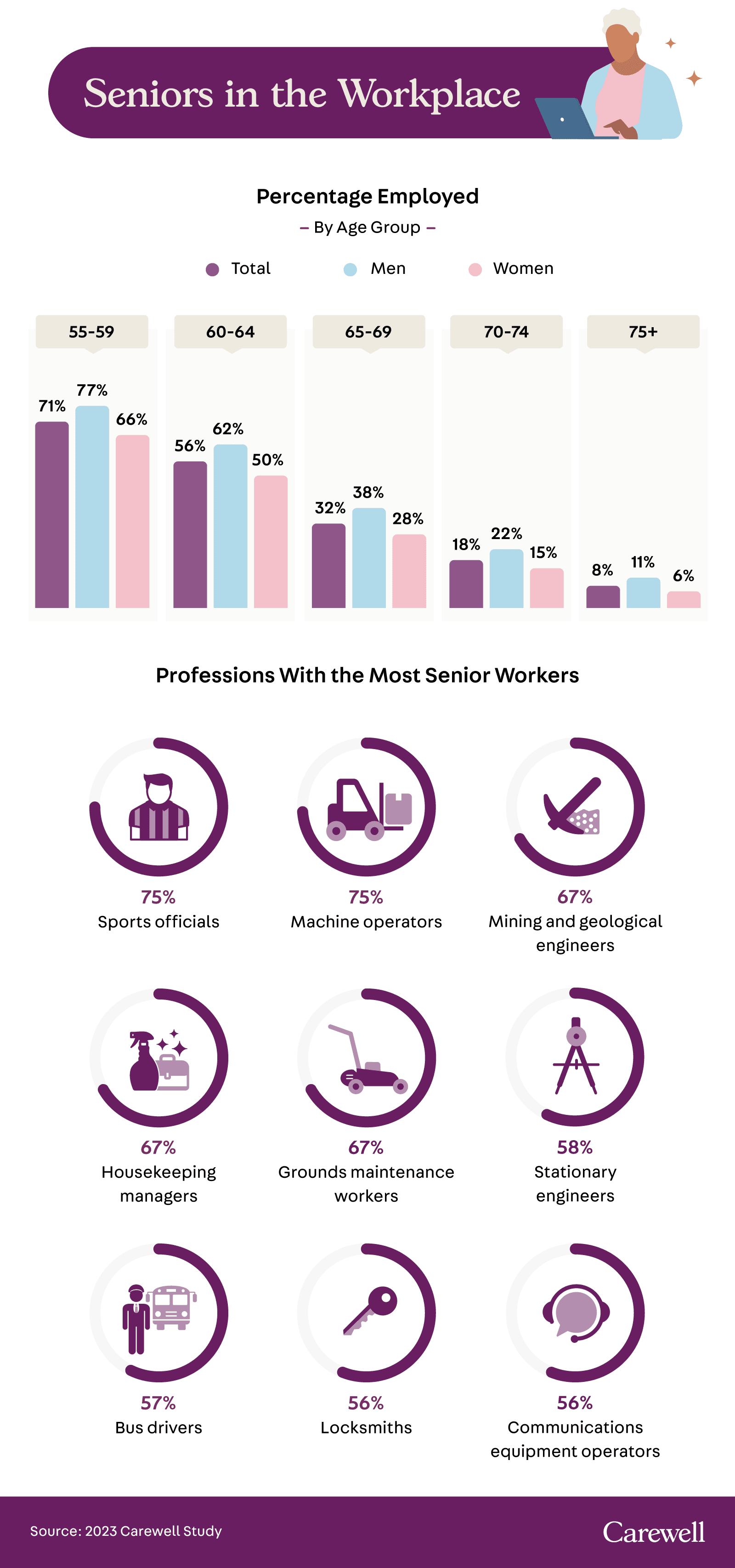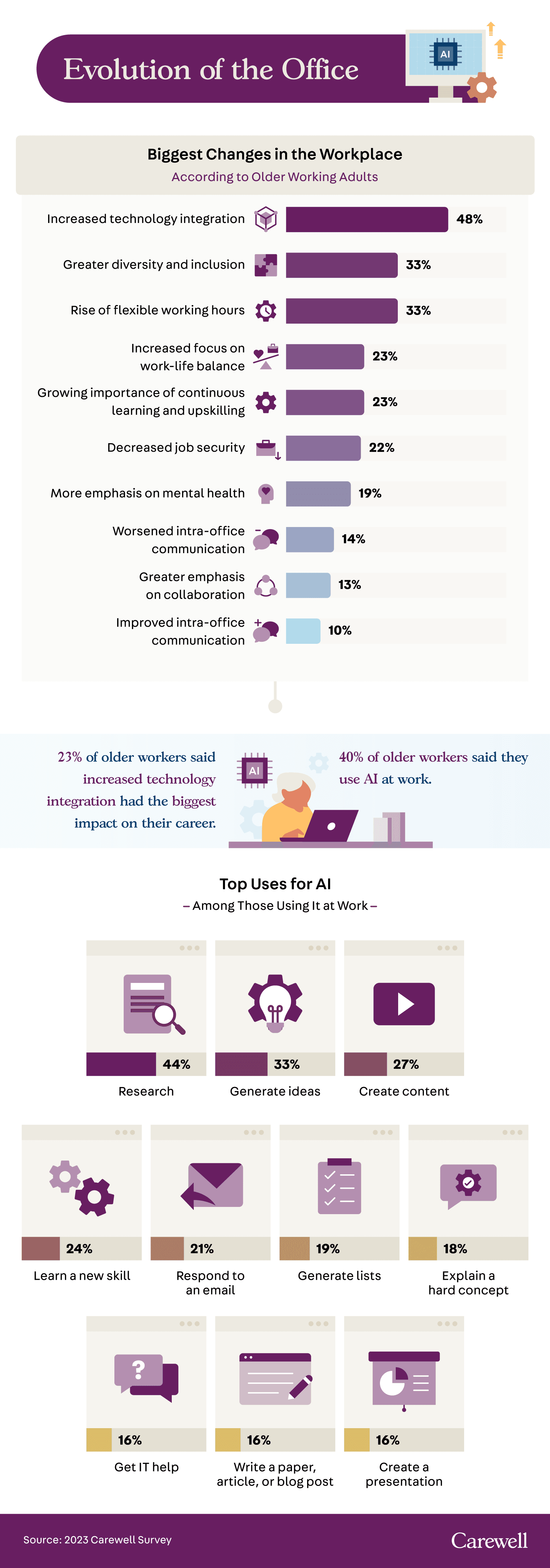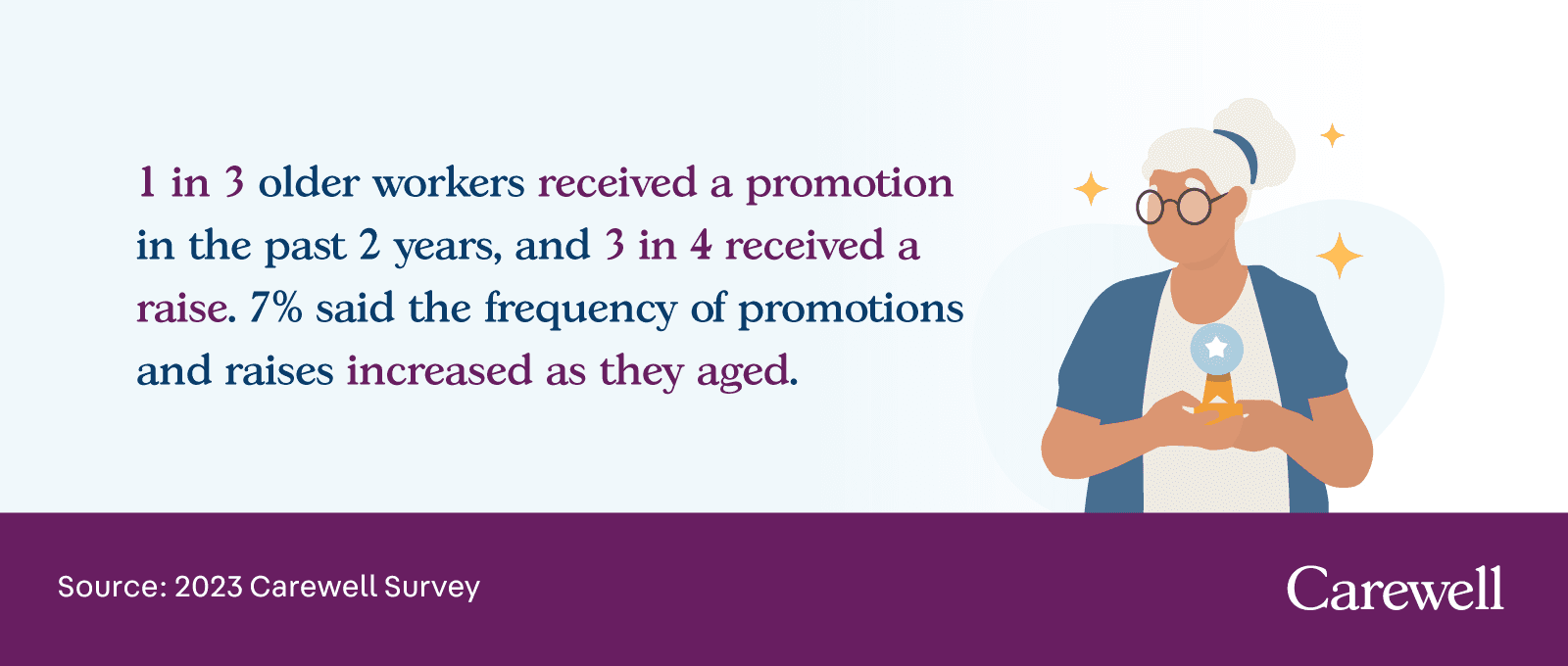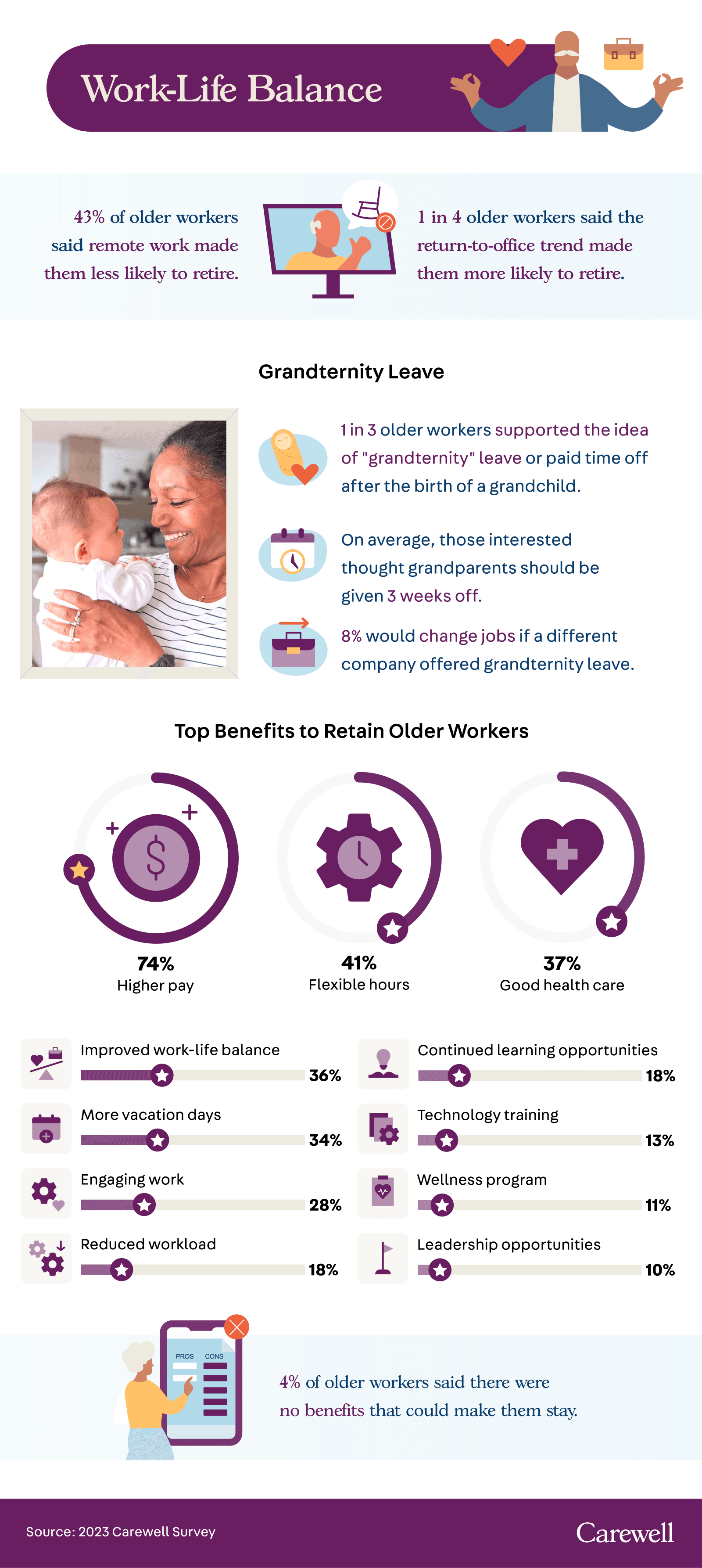Key Takeaways
The states with the most workers over 55 are Nebraska, South Dakota, and New Hampshire.
40% of older workers use AI daily for tasks such as researching, generating ideas, and creating content.
43% of older workers said remote work made them less likely to retire.
1 in 4 older workers said that the return-to-office trend made them more likely to retire.
1 in 3 support “grandternity leave,” and nearly 1 in 10 would change jobs to secure it as a benefit.
Aging in the Office
With AI bringing a revolution to the workplace, no demographic is better suited to reflect on how these changes may parallel past changes than workers over 50. We wanted to gather insight from our most experienced workers on how the workplace is changing, what jobs they are still interested in, and their future career plans.
To comprehensively understand older workers, we surveyed 523 employed Americans over 50. We also analyzed data from the U.S. Census and the Bureau of Labor Current Population Survey for workers aged 55+. Keep reading to find out the status of older workers in the U.S.
State of Seniors
To start, we used information from the U.S. Census and Bureau of Labor Current Population Study to see how many people 55 and older were still in the workforce and which jobs they gravitate toward the most.

While nearly 3 in 4 people between the ages of 55 and 59 were employed, that number drops to only 1 in 10 for those aged 65 to 69. The most significant decline in employment came between the 60 to 64 age group and the 65 to 69 age group. This big drop likely occurred because the age to begin receiving Social Security retirement benefits is 67 (or 66, depending on your birth year).
The likelihood of employment at 55 and onward varied not only by industry but also by location.
The states with the most senior workers were:
1. Nebraska (47%)
2. South Dakota (46%)
3. New Hampshire (46%)
4. Connecticut (45%)
5. Maryland (45%)
6. Colorado (44%)
7. Iowa (44%)
8. Minnesota (44%)
9. Massachusetts (43%)
10. Alaska (42%)
The state with the fewest workers aged 55 and over was West Virginia, where only 29% of their workforce landed in this age group.
Changing Times
No one has seen more changes in the workplace than workers over 50. We asked them what has changed the most throughout their career and how they’re leveraging AI today.

Older workers have been significantly affected by workplace changes over the years. Topping the list was the surge in technology integration at work: 48% of older workers acknowledged this shift, and 23% said this change had the most impact on their careers so far. Remarkably, older workers continue to adopt advanced tech tools, with 40% using AI in their daily tasks (most often for researching, generating ideas, and creating content).
Within the shifting professional landscape, older workers also cited an increased focus on work-life balance as one of the biggest changes they’ve seen. One-third also witnessed employers offering more flexible working hours and promoting greater inclusion and diversity.
We also asked older professionals about their compensation over the past two years. Raises and promotions were fairly common, showcasing their continued contribution and relevance in the modern workplace.

A notable 7% of workers also indicated that they’ve experienced an increase in the frequency of promotions and raises as they’ve aged, challenging common misconceptions about the career trajectory of older professionals.
Balancing Act
Growing older means having a variety of options and ways to spend your time, and working is just one of those options. We talked to older workers about how they manage their personal lives with their work.

The great work-life balancing act may have gotten harder for older workers as of late, as 43% said the option for remote work made them less likely to retire, and the push to return to office made them more likely to retire. For those looking to hang on to their older employees for longer, higher pay, flexible hours, and good health care topped the list of benefits they would stick around for.
Interestingly, 1 in 3 older workers said they were in favor of “grandternity leave” (paid time off after the birth of a grandchild), and 8% would change jobs if a different company offered it. Those interested in this concept wanted an average of three weeks off to enjoy the newest members of their family.
To Retire or Not to Retire
As the digital age progresses, many older professionals are actively engaging and keeping up with emerging trends in the workplace. The modern work environment’s flexibility, epitomized by the rise of remote work, is a double-edged sword. While it encouraged some to stay employed longer, the push to return to offices had the opposite effect on others. Emerging benefits like “grandternity leave” underscore the changing desires of this demographic. Amid these shifts, the pivotal question remains: In today’s dynamic work ecosystem, when is the ideal time for seniors to retire?
Methodology
We collected and analyzed data from the U.S. Census and the Bureau of Labor Statistics Current Population Survey. Additionally, we surveyed 523 employed people aged 50 and older about their experiences in the workplace. Among them, 44% worked in-person, 30% worked remotely, and 26% were hybrid employees.
About Carewell
At Carewell, we understand what it’s like to balance caregiving with your career. Our caregiving specialists are available to help you find reliable products and resources to fit your unique caregiving situation. Call us at 800-696-CARE. We love to help!
Fair use statement
Care to share? Readers are free to share these findings for noncommercial purposes as long as they link back to this article.





